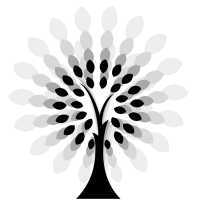Sequent
In thaumaturgy, a sequent is a set of instructions in the Erida languageplugin-autotooltip__small plugin-autotooltip_bigLanguages
List of human languages and dialects, contemporary and extinct.
Language
language
This is in a series of articles about Languages and Communication.
topics sidebar cult1, which when given to an elemental will cause them to perform specific actions or produce a defined outcome. Sequents are magical tools, the building blocks of Rasian thaumaturgy.
Magicplugin-autotooltip__small plugin-autotooltip_bigMagic
Magic, also called thaumaturgy is the art and science of harnessing elementals, and instructing them to carry out simple or complex tasks.
Invoking more powerful spirits or gods is a related but much more dangerous art, called theurgy.
Magic
magic
This is in a series of articles about
 plugin-autotooltip__small plugin-autotooltip_bigMagic
plugin-autotooltip__small plugin-autotooltip_bigMagic
Magic, also called thaumaturgy is the art and science of harnessing elementals, and instructing them to carry out simple or complex tasks.
Invoking more powerful spirits or gods is a related but much more dangerous art, called theurgy.
Magic
magic
This is in a series of articles about
This is in a series of articles about magic, thaumaturgy and esotericismplugin-autotooltip__small plugin-autotooltip_bigMagic
Magic, also called thaumaturgy is the art and science of harnessing elementals, and instructing them to carry out simple or complex tasks.
Invoking more powerful spirits or gods is a related but much more dangerous art, called theurgy.
Magic
magic
This is in a series of articles about.
Because whole instructions are often extremely lengthy and complex, instruction sets are broken down into discrete parts, called sequents. The ability of elementals to take in and parse instructions is limited, and human concentration is also limited. Therefore each sequent usually covers a fundamental concept or action, or piece of information. When put together in a single master sequent, these form the whole instruction.
For example, to a man, the task of picking up a cup merely requires stretching out his hand and grasping it. To instruct an elemental to do this requires forming a physical “hand”, anchoring it against the ground or other surface, and grasping the cup hard enough to grip it firmly, but not so firmly as to crush it.
Before the arts of binding were discovered, ancient sorcerors would have to first have devise a lengthy set of instructions, summon one or more elementals, then instruct the elemental by reciting or chanting lengthy series of instructions. These sequents could be extremely long, taking many hours for complex tasks. Once the task was complete the elementals were either released, or were entirely consumed by the task.
In modern Rasian magick, books of pre-existing sequents already exist covering common tasks. Magisters can imprint their primes with these sequents, and trigger them with a sequence of key words, making the use of magicplugin-autotooltip__small plugin-autotooltip_bigMagic
In common terms, magic is the art of producing a desired outcome through occult means. Various arts are described as magical, from common street illusionists, village herbalists, and rituals for the intercession of deities. However, true magic is the art and science of elemental mastery, harnessing elemental creatures and instructing them to perform simple or complex tasks. far quicker.